Everyone will suffer from a dead battery at some point, so learning how to change a car battery is essential maintenance and can save you time and money.
On the vast majority of cars, replacing the battery is very simple. Not so much on some of the German stuff like here, but whether your battery is under the bonnet, in the boot or even in the floor, the process is the same.
What tools do you need to change a car battery?
Different cars use different batteries with regards to both power ratings and physical size. So, first of all, you’ll be needing the right one. Check out a parts distributor’s website, most will have the option of entering your make and model (and sometimes license plate) to help you identify the right battery.
As for ‘topping up’ with deionized water, well, that doesn’t really happen nowadays. Most modern batteries are designed to be maintenance free, so don’t worry about what your grandad says. You can keep them charged up through a trickle charger. We’ve put together a list of the best car battery chargers and also a guide on how to charge a car battery for more info. The actual fitting part also varies from car to car. In the vast majority of cases, you’ll find your battery located under the bonnet, making access quick and easy. There are exceptions, though, so for illustration purposes, we’re doing the job on a BMW because… well, as with everything else on a BMW, it can be far more complicated than it has to be.
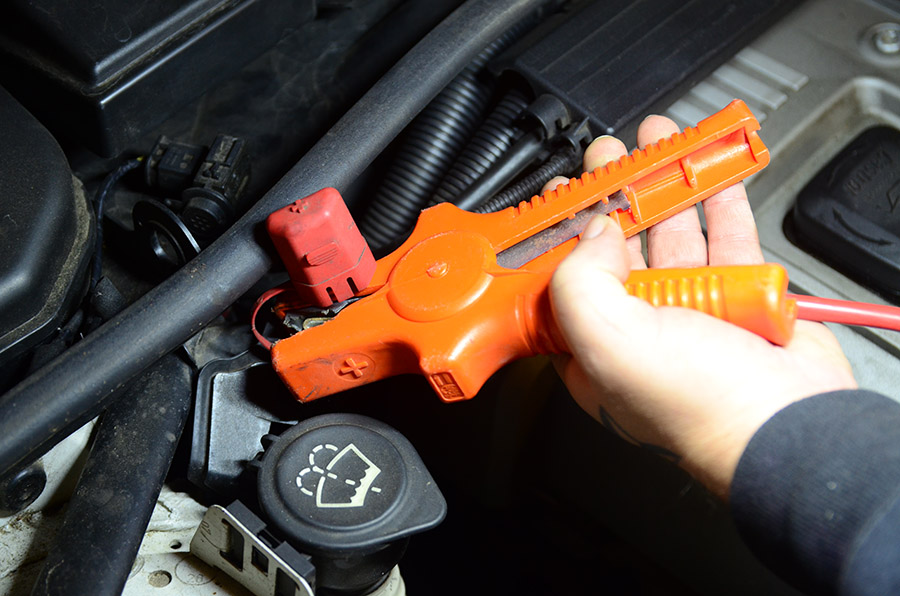
Do you need any specialist tools?
To change a car battery, unless you have a modern car and you’re using a different type of – or a more powerful – battery, you won’t need any specialist tools. For testing purposes, however, it’s always best to use a proper drop tester. When it comes to jump starting too, you’ll need a power pack or jump leads… all pretty basic stuff though. Have a read of our guide to jump leads.
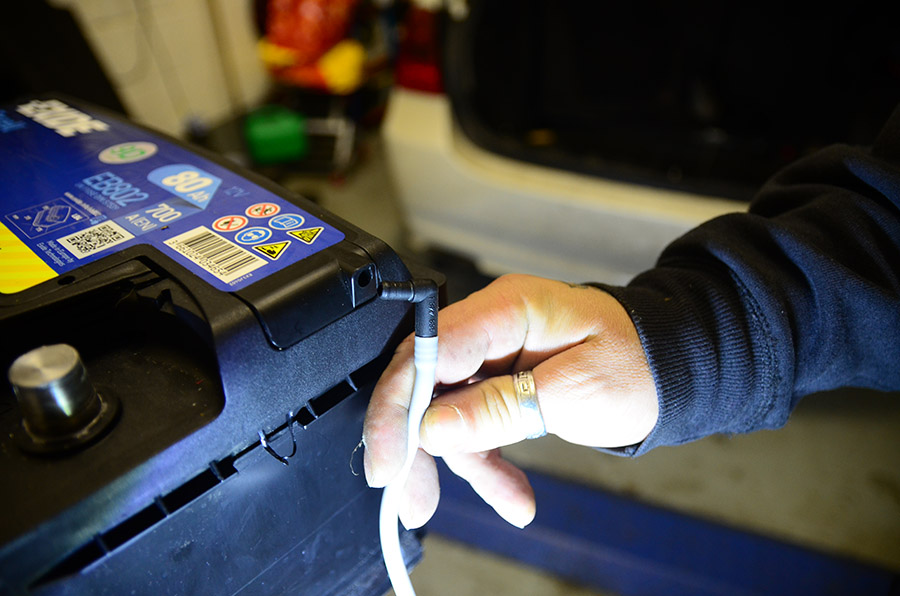
How to change a car battery
1. Remove the old car battery clamp
To change a car battery, it couldn’t be simpler. Once you’ve got access, you’ll find that it’s secured tightly to the car to stop it moving about. This could be with a large clamp across the top, or a smaller item holding the battery down from the bottom. You will notice that most batteries have a special ridge around the bottom for exactly this reason.

Some (as in our case) will require the removal of some brackets or trim blocking the way too. So, the first job is to remove all of these restrictions and get the battery free to move.
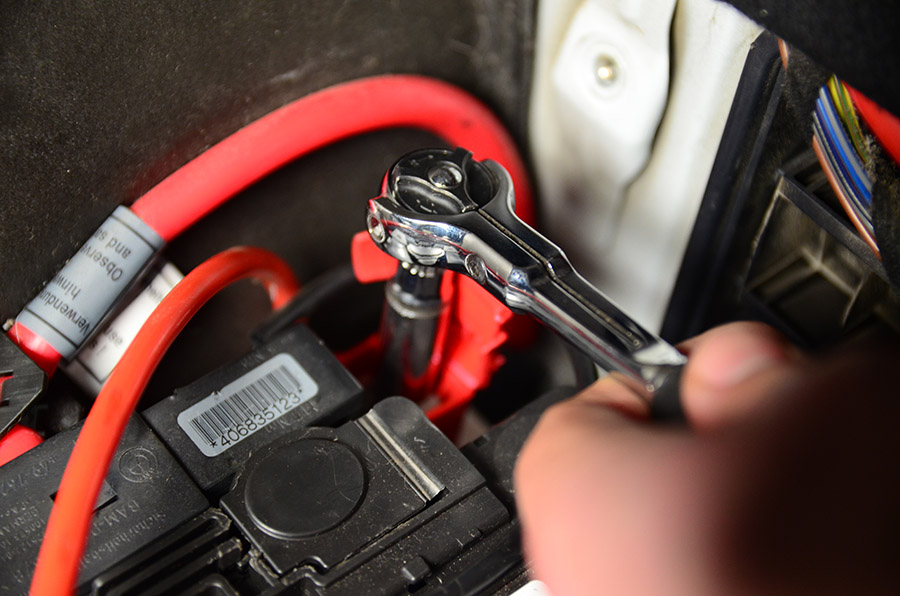
2. Disconnect terminal leads
The next step when you change a car battery is to disconnect the cables. Start with the positive item by loosening off the securing nut and removing the clamp from the terminal. This can be tucked out of the way for now. We always start with the positive as, once it’s removed, there’s less chance of accidentally shorting out the system.
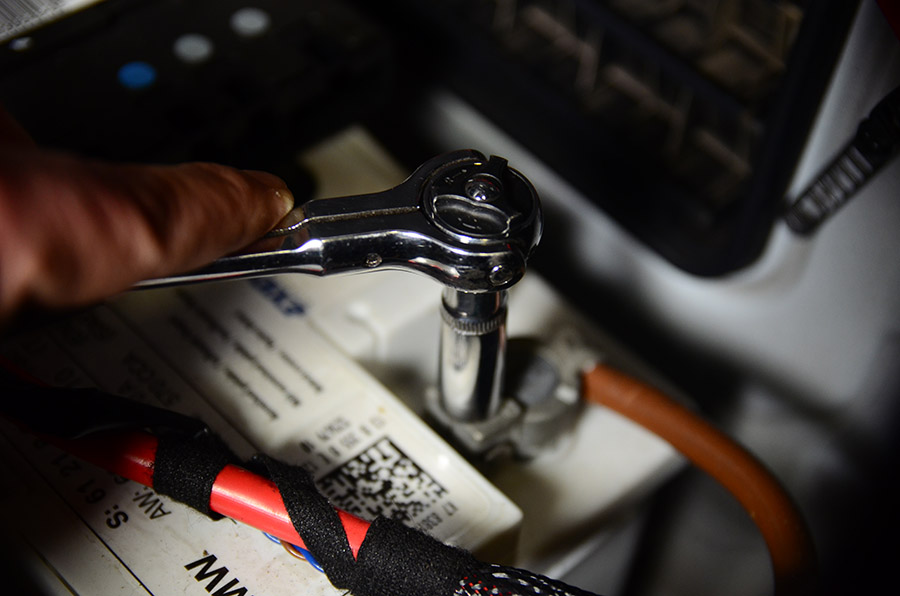
Next, remove the negative cable in the same way, and you’ll usually be able to slide and lift the whole battery out. Be careful not to smash your knuckles or squash your fingers, these things weigh a ton. Keep the battery level, be careful not to drop it, and don’t forget to dispose of it responsibly at your local recycling center. Battery acid is seriously nasty stuff if you manage to spill it.
Bear in mind that on some cars, there’s a couple of bits to look out for before you can remove the unit. Plenty of VW motors, BMWs and the like will have a fuse board, or some sort of electronic module, bolted or clipped to the top of the battery. You’ll need to hold this out of the way to get your battery out.
Others, particularly when the battery is in the boot, will have a special breather pipe connected. Standard lead acid batteries need to vent off the gasses they produce, so these will usually be directed through a pipe to the outside of the car. Again, it’s all pretty straightforward, you just have to remember to plug this into the new battery.
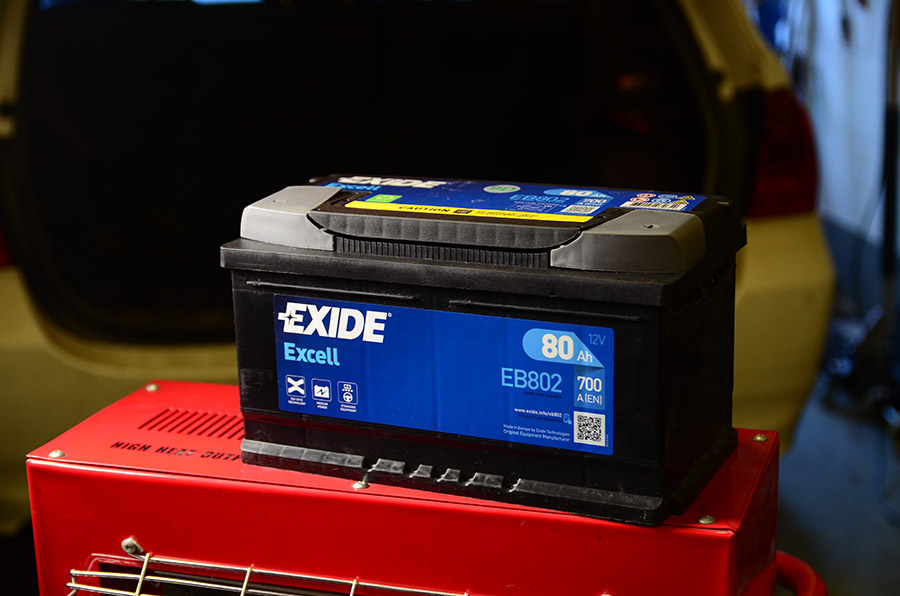
3. Ensure you have the correct replacement battery
If you’re at this point in our how to change a car battery guide, then you will have already ordered your new battery. However, a few visual checks will help ensure it’s the correct one. In most cases, it will be around the same size as the item you’re taking out. Normally, the height is the biggest issue here, but the width or length will often differ a little. The point is that it has to fit in the space securely and be clamped down. So, if it’s excessively different, it’s probably not the right one.
Second, the terminals. Some cars have their battery terminals reversed. In our case, the positive is on the bottom right, but some may have it on the bottom left. It goes without saying that it’s important not to connect any cable to the wrong terminal. These terminals also come in different shapes and sizes, so basically speaking, the ones on the new battery have to be the same as on the old.

Finally, we have the specifications on top. There are various numbers on car batteries, but perhaps the most crucial is the Ah (amp hour) number. This tells us the amount of current available for a period of time. (A 70Ah battery, for example, will provide 70 amps for one hour, or 1 amp for 70 hours.)
The Cranking Amps (denoted as the A(EN) number in Europe) is the current that the battery can provide for 30 seconds at 0degC before the voltage drops to 7.2V. And the CCA (Cold Cranking Amps) is the same, but at -18decC. The CCA is less prevalent nowadays, as modern ECU controlled cars start quicker than classics; it’s not even shown on our new car battery here.
Anyway, most of these numbers should remain the same on your new unit, or be slightly more for high performance batteries. Basically, you don’t want the numbers getting smaller.
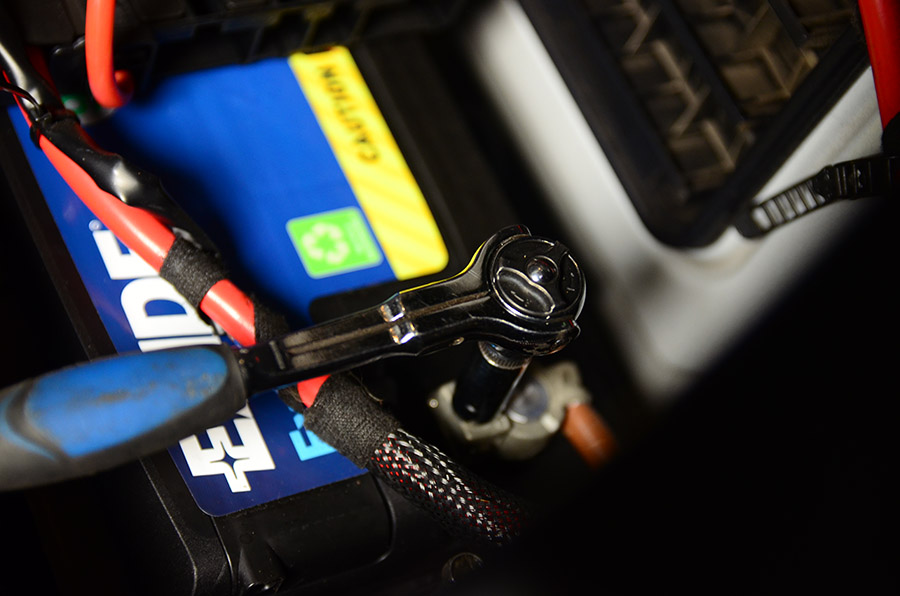
4. Fit the new car battery
Some batteries may have breather bungs fitted for when they’re in storage and these will need to be removed before installation. They’ll nearly always have terminal covers that you’ll need to whip off too. When that’s all sorted, slide the new battery in place, being careful to avoid snagging any cables along the way.
Once the battery is securely clamped down, you can reconnect the cables. Start off with the negative, and then follow with the positive. The live connection may spark when you slip it onto the terminal, and although this is normal, you still don’t want to prolong the sparking as it may create a surge in the electrical system. In other words, do this bit as swiftly and positively as you can, and wear gloves if you’re not confident.
5. Car battery coding
In most cases you’ll be done by now, and have learned how to change your car battery. However, on some modern cars (most commonly the German ones), coding the battery to the vehicle may be required. This isn’t always the case if the battery is a straight swap.
However, when it’s an item with a higher Cranking Amps or Amp hour figure, or if you’re changing from a lead acid to a calcium or AGM (Absorbent Glass Mat) battery, this changes a few of the sensors. This is mainly to tell the car what rate the alternator needs to charge at for an accurate top up. In these rare cases, you’ll need a garage to use their diagnostic equipment to set the new parameters through the OBD port.
How Often Should You Change a Car Battery?
Strictly speaking, there isn’t really a time frame you can use. Understanding the symptoms of a dying car battery is more useful information than trying to provide a time period. If you notice the car struggling to start, particularly on cold mornings, this could be a good indicator that there’s is an issue with the battery. Similarly, though, this could be an indicator that there’s an issue with the alternator, too. To differentiate the two, if you’ve driven your car for a long period of time the day previous, and the car still struggles to start the next day, then it’s likely the alternator isn’t charging the battery and your problem lies here. However, the battery could also not be holding charge. If this is the case, you’ll likely have difficulty starting the vehicle at all times.
It’s wise investing in a voltmeter to check the health of your battery. This will allow you to check the voltage within the battery. A healthy battery should read between 12.4 and 12.7.
Overtime, batteries deteriorate. That doesn’t matter whether it’s your car’s battery, your mobile or your drill. The ability to hold full charge decreases and therefore, won’t always have the capacity to hold 12.4 to 12.7 volts. If you’ve had your car battery for a number of years, the likelihood is that it will need replacing.






